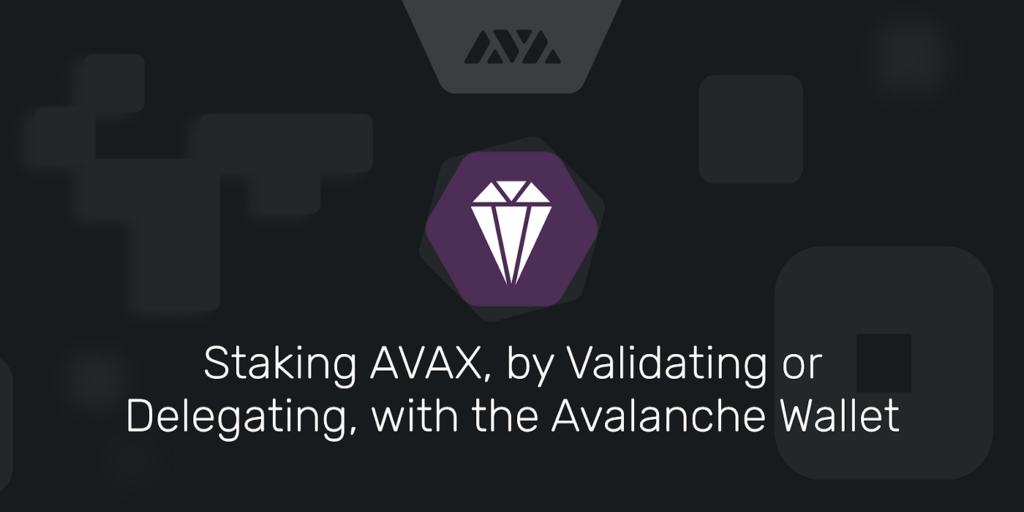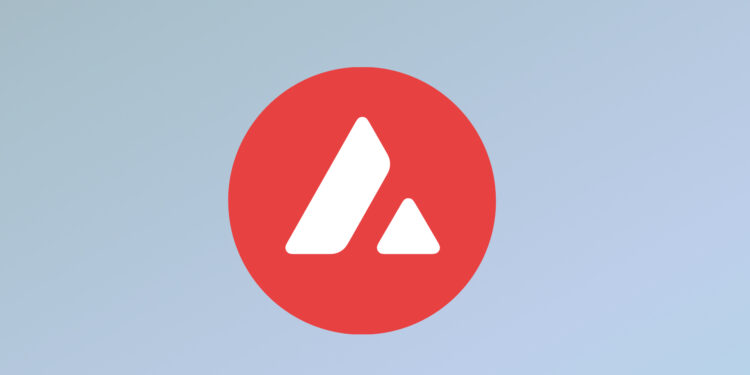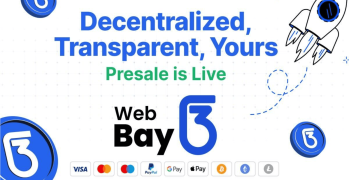- What is AVAX Staking?
- How Does AVAX Staking Work?
- Validators
- Delegators
- Is Staking AVAX Profitable?
- Conclusion
- FAQs
Avalanche is currently one of the most prominent blockchain networks since it enables the creation of several decentralized applications and solutions. Additionally, the network intends to solve the scalability issues that other decentralized blockchain systems, such as Ethereum, are experiencing. On Avalanche, developers of decentralized apps (dApps) can construct interoperable applications for the Avalanche network. The native currency of the smart contract platform Avalanche is AVAX, and it is gaining prominence as an alternative to Ethereum.
An autumn rally for AVAX was sparked by the news that Deloitte will engage Avalanche to assist it with its work for the Federal Emergency Management Agency (FEMA). With the assistance of the Deloitte contract in 2022, the Avalanche blockchain and token could reach previously unimaginable heights. AVAX is utilized as staking fees and rewards to protect the Avalanche ecosystem. This guide explains everything you need to know about AVAX staking. Without further ado, let us get started.
What is AVAX Staking?
Avalanche employs Proof of Stake (POS), whereas Bitcoin uses Proof of Work (POW). In the event that you are not aware of POS, it is important for you to understand that it is a consensus methodology in blockchain technology that is used to pick validators based on the number of cryptocurrencies they hold in the blockchain platform. This is performed in order to avoid the computing expenses involved with POW.
Staking cryptocurrency on a blockchain network validates transactions and secures the network. The Avalanche POS system can be secured by staking a certain amount of AVAX tokens in the network’s blockchain. You must be aware that the user will not have access to their tokens while participating in the staking period because the coins are locked during that time. Nonetheless, depositing AVAX enables the blockchain network to verify that the nodes are dedicated to the Avalanche ecosystem’s sustainability.
The methodology behind Avalanche POS is somewhat distinct from those of other blockchain networks that use the POS. As Avalanche does not employ slashing, stakes are restored when the wagering period expires. Slashing is the situation in which a percentage of a validator’s staked tokens are lost as a result of blockchain failures or criminal behavior.

How Does AVAX Staking Work?
You can stake AVAX tokens in one of two ways: as a validator or as a delegator. Transactions are validated by validators, who also contribute to the blockchain network’s overall security. Validators can be thought of as active nodes in the network. However, a validator’s participation in the blockchain network will be requested of them more frequently in proportion to the number of tokens they have staked, which will result in increased staking incentives for those validators.
On the other hand, individuals who have a stake in the event but wish to play a more passive role are known as delegators. In addition, delegates place their faith in an already established validator node by delegating the tokens they have staked. It is also crucial to understand that delegators are compensated for their contributions to the blockchain network.

Validators
Validators are users who own Avalanche Primary Network tokens and take part in the network’s staking and validation processes. In addition, validators publish a unique “addValidator” transaction to the Platform Chain (known as the P-Chain). A user must stake at least 2,000 AVAX tokens to become a validator. The minimum time required to stake these tokens is two weeks, and the maximum time is one year. Each validator carries a maximum weight to maintain the network’s utmost security. The validators’ stake, in addition to the stake that was assigned to them, is included in the maximum weighting. Nevertheless, the maximum weight is the minimum out of 3 million AVAX tokens, which is five times the validator’s stake.
For instance, if a person staked 2,000 AVAX to become a validator, they can only receive 8,000 AVAX in delegations. This safety measure is meant to prevent validators from building several rogue nodes that impersonate delegators in order to cheat the system via a Sybil attack. In addition, a validator must be online and accurate at least 60% of the time in order to get staking incentives. In addition to receiving rewards, validators can also define the delegation price they charge for their services.
Delegators
In order to participate in the Avalanche network as a delegator, you will need to stake a minimum of 25 AVAX tokens. As with validators, these tokens must be staked between two weeks and one year. When delegating staked tokens, a user must authorize a validator node to handle transactions on their behalf. Neither you nor your AVAX tokens are in danger when you delegate them. A validator is unable to trade staked AVAX tokens, and users will only obtain the initial staked amount plus staking incentives at the conclusion of the locking phase.
The rewards that are gathered by the validators are then given back to the delegators in a manner that is proportional to the number of tokens that were staked. As a result of the increased work that validators put into the blockchain network, delegators are required to pay validators a delegation fee. In most cases, the minimum rate for the delegation charge is not lower than 2%.
Is Staking AVAX Profitable?
Crypto enthusiasts often turn to stake AVAX as a way to generate a passive income with no associated risks. The concept of staking is straightforward: each AVAX token staked creates new ones. Furthermore, the AVAX token is a rising-value asset, and possessing it might make a significant impact over time. Overall, AVAX staking is the optimal method for earning additional money while you sleep. Importantly, Avalanche’s network security does not rely on Proof of Work. Hence, powerful GPUs cannot be utilized.
Since Avalanche employs Proof of Stake, those who wish to ensure the integrity of the network must, rather than expanding value (in the form of hardware and electricity), ‘stake’ their Avalanche tokens. AVAX staking is significantly simpler, as users are only required to stake their tokens to earn a passive income. In other words, you can receive rewards without mining AVAX by staking the currency. You must stake it, not simply hold it. Essentially, you give it to the network for a defined period of time and then obtain the difference.
Conclusion
Earning passive revenue by staking in a blockchain network is a more reliable and safe option. Being a validator involves staking, which is a form of hustle that calls for the utmost concentration so that one does not get lost. A holder of AVAX tokens has the option of staking their tokens through a cryptocurrency exchange such as Binance as an alternative to delegating or building a validator node. AVAX staking is indeed a profitable venture.
FAQs
How much AVAX do I need to stake?
Can I stake AVAX on Coinbase?
Coinbase Cloud includes a public validator that enables delegators to stake their AVAX efficiently and securely. Validators contribute to the expansion and security of the network by checking transactions and engaging in consensus.
What is the difference between AVAX and AVAX C chain?
The primary difference between the x-chain and the c-chain is that the x-chain is incompatible with MetaMask and similar wallets, as well as DeFi. Your x-chain address is accessible via the Avalanche wallet, and a fresh address is generated for each deposit (but the previous addresses remain valid too).























